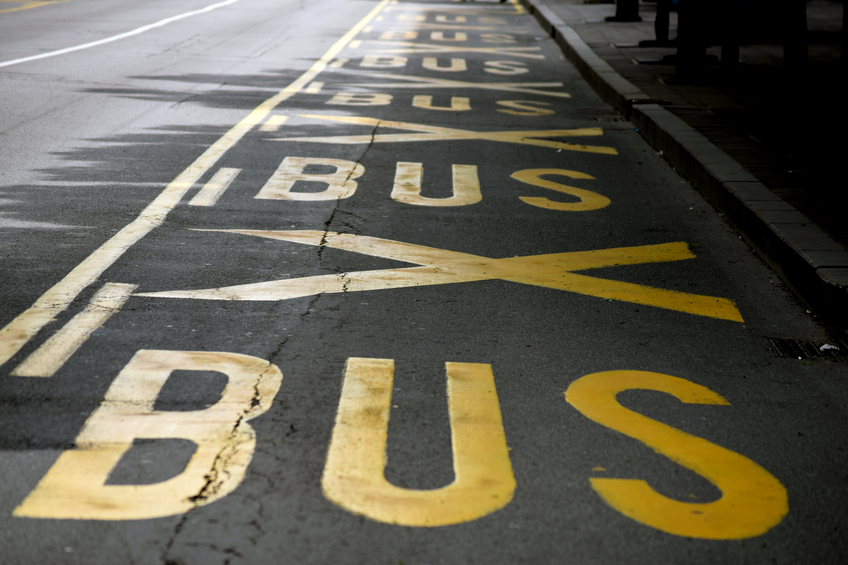Minnesota Transportation and Ethics 24 PDH Discount Package 2
Courses in this Package
Low-Cost Treatments for Horizontal Curve Safety (C08-020)
Traffic Bottlenecks Operational Improvements (C06-018)
Impact of Exempt Vehicles on HOV Lanes (C05-012)
Geometric Design for Roads, Streets, Walks and Open Storage Areas (C03-018)
Ethics in Professional Practice (LE2-007)

This online PDH course primarily covers engineering countermeasures for horizontal curve safety that are relatively low-cost, such as signage and pavement markings.
This course is intended to provide information specifically relating to lower volume two-lane roads and the agencies that manage them. It will help transportation agencies and their crews understand the available countermeasures and how to select and apply them.
This 8 PDH online course is applicable to traffic engineers, local transport agencies, design professionals and personnel who wish to understand the available horizontal curve safety countermeasures and how to select and apply them.
This PE continuing education course is intended to provide you with the following specific knowledge and skills:
- Learning about the two components of safety improvements
- Familiarization with the markings, signs, and pavement countermeasures that are used to improve horizontal curve safety
- Addressing the importance of roadside conditions and improvement opportunities
- Familiarization with the possible means of improving intersections
Upon successful completion of the quiz, print your Certificate of Completion instantly. (Note: if you are paying by check or money order, you will be able to print it after we receive your payment.) For your convenience, we will also email it to you. Please note that you can log in to your account at any time to access and print your Certificate of Completion.

This online engineering PDH course describes bottlenecks and explores near-term operational and low-cost construction opportunities to correct them.
Delays due to traffic congestion seem like an unavoidable, frustrating fact of life. Or are they—unavoidable, that is? This course focuses on traffic congestion caused by bottlenecks—which are specific locations on the highway system where the physical layout of the roadway routinely cannot process the traffic that wants to use it and results in localized, recurring congestion.
By focusing on relieving localized, recurring congestion at bottlenecks, this primer can help agencies identify the right fix for a particular bottleneck. What’s more, the right fix for a localized, recurring bottleneck is usually spot-specific, more effective, less expensive, and faster to implement than building a new facility.
This 6 PDH online course is applicable to traffic engineers and planners, conceptual and detail designers, and other technical professionals who are interested in gaining a better understanding in traffic bottlenecks operational improvements.
This PE continuing education course is intended to provide you with the following specific knowledge and skills:
- Understanding bottlenecks and congestion
- Learning about the different strategies of resolving congestion
- Knowing how to structure a localized bottleneck program
- Identifying, assessing and addressing bottlenecks
- Incorporating quick-fix bottleneck solutions into the Congestion Initiative
- Understanding how agencies are dealing with bottlenecks (case studies)
Upon successful completion of the quiz, print your Certificate of Completion instantly. (Note: if you are paying by check or money order, you will be able to print it after we receive your payment.) For your convenience, we will also email it to you. Please note that you can log in to your account at any time to access and print your Certificate of Completion.

This online engineering PDH course presents information on defining high-occupancy vehicle (HOV) lane capacity, options for using available HOV lane capacity, and analyzing HOV exemption policies. It examines the potential impact of certain exempt vehicles on the operation of high-occupancy vehicles (HOV) facilities. The possible exempt vehicles examined in this course include environmentally friendly vehicles, and law enforcement, emergency services, and designated public transportation vehicles. It also presents the experience with the use of HOV lanes by these types of exempt vehicles. Finally, it examines the potential issues and approaches for allowing exempt vehicles to use HOV lanes.
Traffic congestion continues to be a major issue in metropolitan areas throughout the country. The agencies responsible for the surface transportation system in these regions use a variety of approaches and techniques to address concerns relating to traffic congestion, mobility, and air quality. The use of HOV facilities represents one approach in use or being considered in many urban areas.
This 5 PDH online course is applicable to traffic engineers, transportation planners, conceptual and detail designers, and other technical professionals who will be considering HOV exemption policies as well as monitoring and evaluating the use of HOV lanes by exempt vehicles.
This PE continuing education course is intended to provide you with the following specific knowledge and skills:
- Learning about HOV facilities and HOV lane capacities
- Evaluating options for using HOV lane capacities
- Analyzing HOV exemption policies on traffic flow
- Considering HOV exemption for environmentally friendly vehicles
- Considering HOV exemptions for law enforcement vehicles
- Considering HOV exemptions for law public transportation vehicles
In this professional engineering CEU course, you need to review the Federal Highway Administration Publication FHWA-OP-05-058, "Potential Impact of Exempt Vehicles on HOV Lanes".
Upon successful completion of the quiz, print your Certificate of Completion instantly. (Note: if you are paying by check or money order, you will be able to print it after we receive your payment.) For your convenience, we will also email it to you. Please note that you can log in to your account at any time to access and print your Certificate of Completion.

This online engineering PDH course refers to military design requirements and objectives and provides guidance on the general provisions and geometric design criteria for the design of roads, streets, bridges, walks, parking, residence drives and storage areas. It discusses how geometric design deals with the dimensions of the visible features of a facility such as alignment, sight distances, widths, slopes, and grades.
This 3 PDH online course is applicable to civil and traffic engineers, technical professionals and construction personnel who are interested in gaining a better understanding of geometric design for roadways, walkways and open storage areas.
This PE continuing education course is intended to provide you with the following specific knowledge and skills:
- Understanding the purpose, scope and definitions of geometric design
- Understanding the general provisions for access highway and installation highway design
- Understanding the design basis for roads, streets and storage areas
- Understanding the principles of geometric design for underpass roadways, bridges, walks, parking and residence drives
In this professional engineering CEU course, you need to review the course document titled "General Provisions and Geometric Design for Roads, Streets, Walks and Open Storage Areas" prepared by the Department of Defense, Unified Facilities Criteria Publication "UFC 3-250-18FA", January 2006.
Upon successful completion of the quiz, print your Certificate of Completion instantly. (Note: if you are paying by check or money order, you will be able to print it after we receive your payment.) For your convenience, we will also email it to you. Please note that you can log in to your account at any time to access and print your Certificate of Completion.

In this online engineering PDH course, background on the philosophical models that guide ethical behavior is discussed and then applied to specific situations in engineering codes of ethics. This course is based on the American Society of Mechanical Engineers Professional Practice Curriculum, Volume 8, Section: Engineering Ethics.
Many engineering organizations have drafted codes of ethics to which their members are required to commit. Generally, these codes are quite similar and are based on a few fundamental principles which provide guidance to professional engineers in common situations. Nevertheless, there are many difficult or ambiguous situations in which the best ethical solution is difficult to determine.
This 2 PDH online course is intended primarily for engineers seeking to learn ethical principles and how to apply them to their professional practice.
This PE continuing education course is intended to provide you with the following specific knowledge and skills:
-
Determining ethical behavior using several philosophical models
-
Evaluating a practical situation in terms of a professional code of ethics
-
Identifying situations that represent conflicts of interest and formulate a proper response
-
Applying the standards of professional ethics in technical communication
-
Recognizing environmental impacts of engineering work
-
Considering principles of sustainable development in the performance of professional duties
In this professional engineering CEU course, you need to review "Ethics in Professional Practice" published by the American Society of Mechanical Engineers (ASME). (This course document is reproduced by permission of the ASME (www.asme.org). You may also download from or view this course document on the ASME's website by clicking on Ethics in Professional Practice).
Once you complete your course review, you need to take a multiple-choice quiz consisting of fifteen (15) questions to earn 2 PDH credit. The quiz will be based on this ASME publication.
Upon successful completion of the quiz, print your Certificate of Completion instantly. (Note: if you are paying by check or money order, you will be able to print it after we receive your payment.) For your convenience, we will also email it to you. Please note that you can log in to your account at any time to access and print your Certificate of Completion.